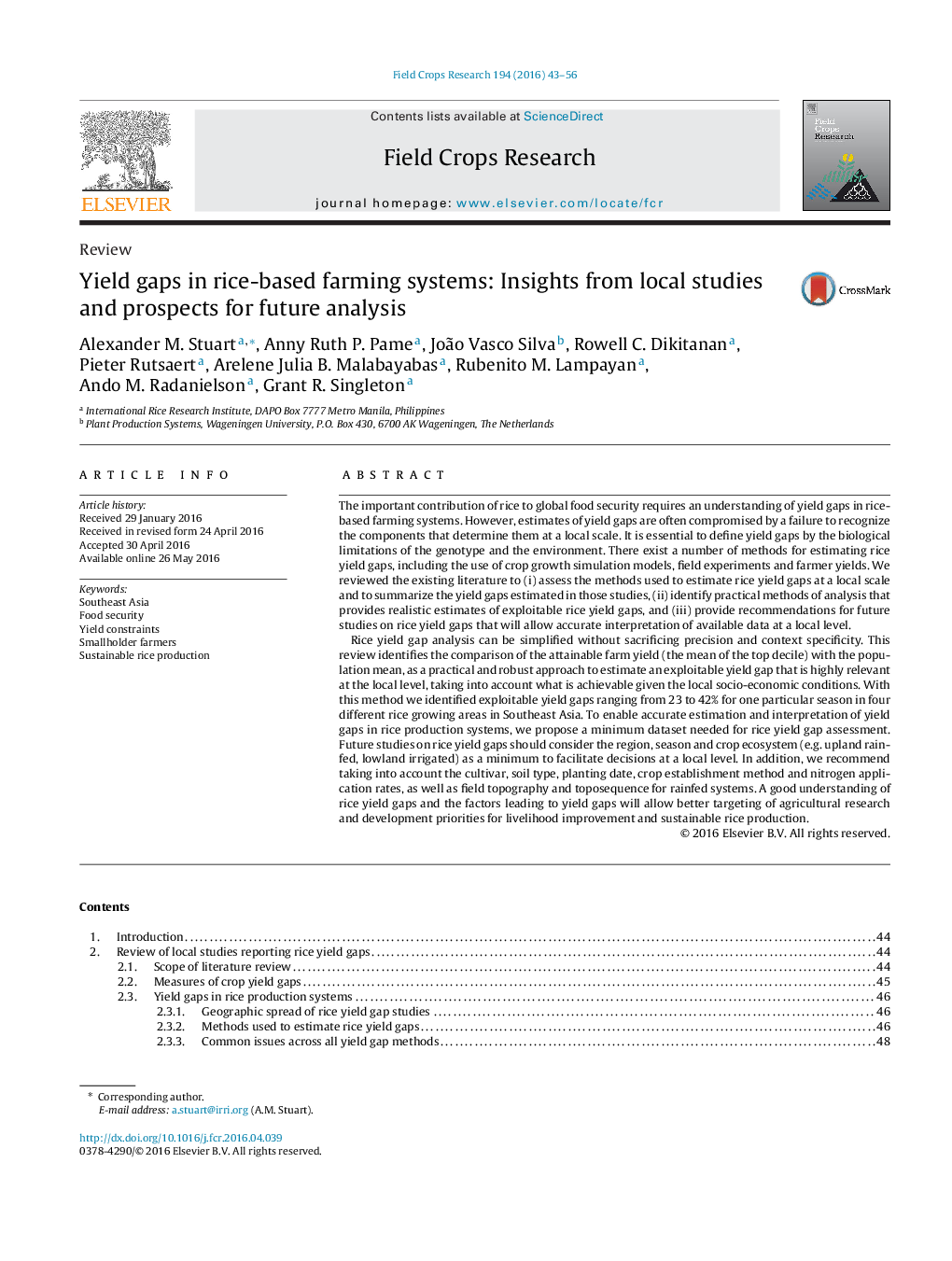| کد مقاله | کد نشریه | سال انتشار | مقاله انگلیسی | نسخه تمام متن |
|---|---|---|---|---|
| 4509825 | 1624669 | 2016 | 14 صفحه PDF | دانلود رایگان |
• We reviewed the literature to assess the methods used to estimate rice yield gaps.
• Current estimates are often difficult to interpret and compare.
• Mean of top decile minus mean farm yield is relevant to estimate exploitable yield gaps.
• To enable accurate interpretation, recommendations for future studies are proposed.
• Rice yield gap studies should consider region, season and crop ecosystem as a minimum.
The important contribution of rice to global food security requires an understanding of yield gaps in rice-based farming systems. However, estimates of yield gaps are often compromised by a failure to recognize the components that determine them at a local scale. It is essential to define yield gaps by the biological limitations of the genotype and the environment. There exist a number of methods for estimating rice yield gaps, including the use of crop growth simulation models, field experiments and farmer yields. We reviewed the existing literature to (i) assess the methods used to estimate rice yield gaps at a local scale and to summarize the yield gaps estimated in those studies, (ii) identify practical methods of analysis that provides realistic estimates of exploitable rice yield gaps, and (iii) provide recommendations for future studies on rice yield gaps that will allow accurate interpretation of available data at a local level.Rice yield gap analysis can be simplified without sacrificing precision and context specificity. This review identifies the comparison of the attainable farm yield (the mean of the top decile) with the population mean, as a practical and robust approach to estimate an exploitable yield gap that is highly relevant at the local level, taking into account what is achievable given the local socio-economic conditions. With this method we identified exploitable yield gaps ranging from 23 to 42% for one particular season in four different rice growing areas in Southeast Asia. To enable accurate estimation and interpretation of yield gaps in rice production systems, we propose a minimum dataset needed for rice yield gap assessment. Future studies on rice yield gaps should consider the region, season and crop ecosystem (e.g. upland rainfed, lowland irrigated) as a minimum to facilitate decisions at a local level. In addition, we recommend taking into account the cultivar, soil type, planting date, crop establishment method and nitrogen application rates, as well as field topography and toposequence for rainfed systems. A good understanding of rice yield gaps and the factors leading to yield gaps will allow better targeting of agricultural research and development priorities for livelihood improvement and sustainable rice production.
Journal: Field Crops Research - Volume 194, 1 August 2016, Pages 43–56
